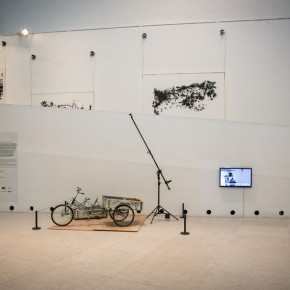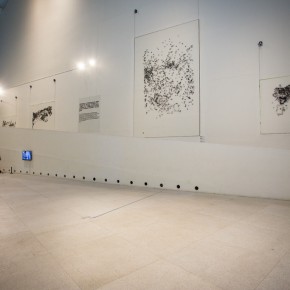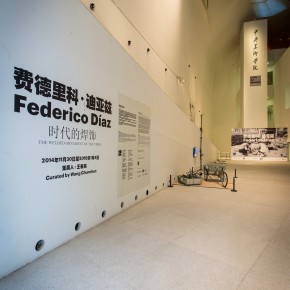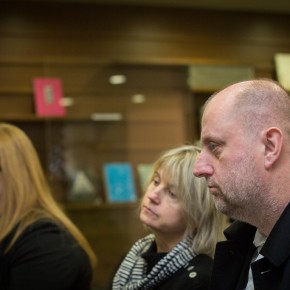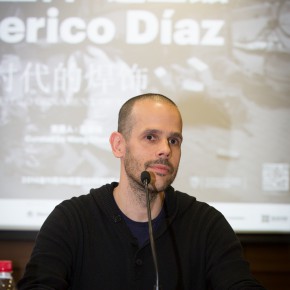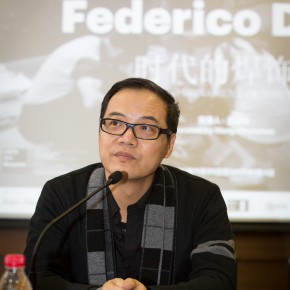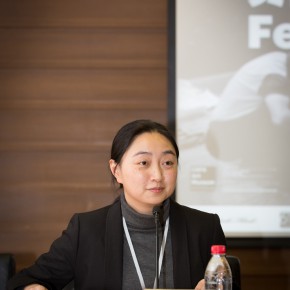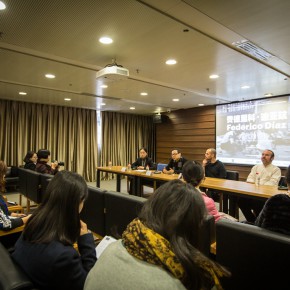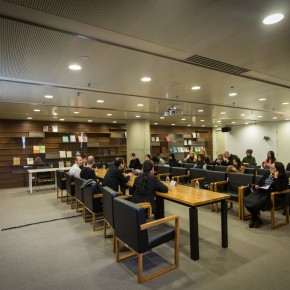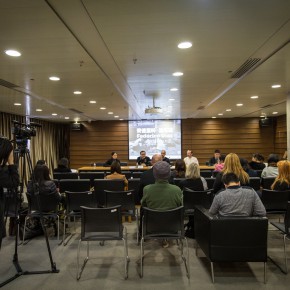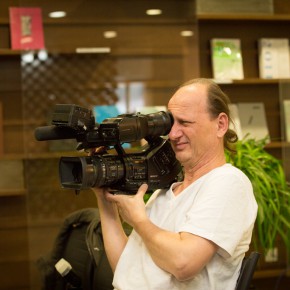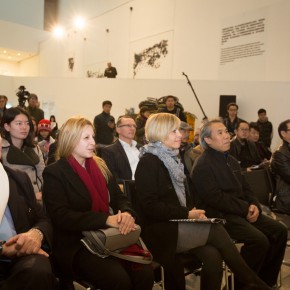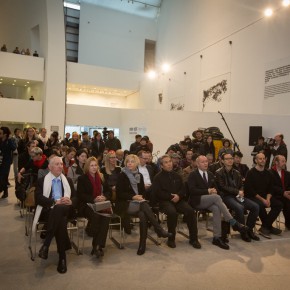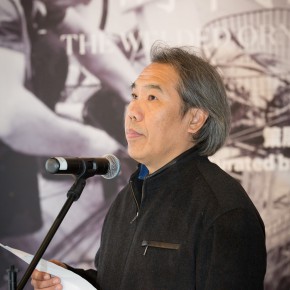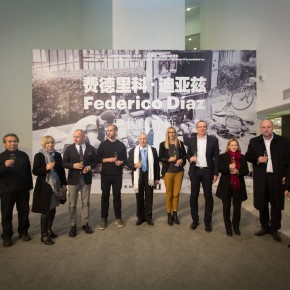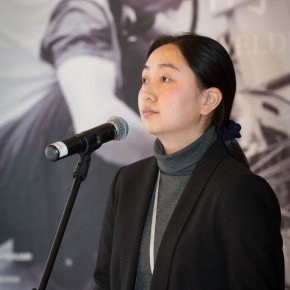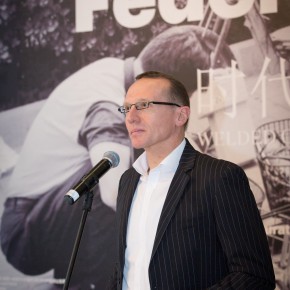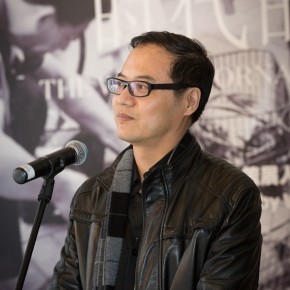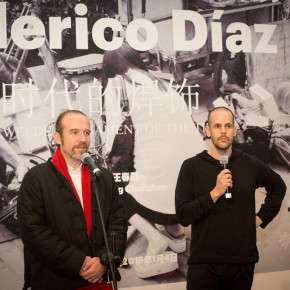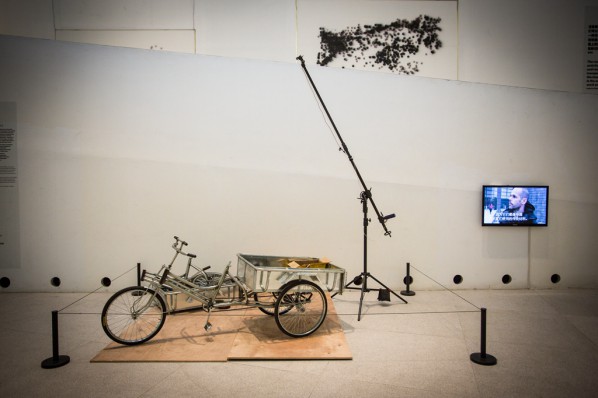
On November 30, 2014, the Czech artist Federico Díaz’s solo exhibition “The Welded Ornament of the Times” officially opened at the CAFA Art Museum. The exhibition is jointly organized by CAFA Art Museum and the Embassy of the Czech Republic in China, and Wang Chunchen, Director of the Academic Department serves as the curator.
Federico Díaz is a visual activist of Czech-Argentinean descent, he lives and works in Prague. Since the 1990s he has used new media to reveal the immaterial aspects of everyday reality in our natural environment that are elusive to primary human senses. Díaz’s work is typified by the language of algorithmically-generated art and systems of art, increasingly more intense channels of direct communication with the viewer and the ability to follow his basic creative premise, which says that art is created without the touch of the human hand. He uses media and technology as a socio-political catalyst for social change.
It is the first time for CAFA Art Museum to officially arrange a solo exhibition of the artist in the public space outside the regular exhibition hall, through a close communication with the artist, he presents the large scale installation created according to the space, and more public interactions are blended with it, to develop a new idea and possibility for exhibiting in an art museum. At 3:00 pm, the press conference was held at the VIP room of CAFA Art Museum. Gao Gao from the Academic Department of CAFA Art Museum, Libor?Secka, Ambassador of the Embassy of the Czech Republic in China, Wang Chunchen, the curator of the exhibition and Director of the Academic Department of CAFA Art Museum, artist Federico Díaz, Zdenek Sklenar, Head of Zdenek Sklenar Gallery in Czech Republic, and so on attended the press conference.
Curator Wang Chunchen remembered that he met Czech artist Federico Díaz by chance about three years ago, and was interested in his art, which was the reason why he planned the exhibition. He stressed that Díaz’s exhibition was related to “technology”, and current society had developed a new type of art which applied technology to the performance of experimental art. It is with a positive meaning to experimentally combine the emerging technology and methods, materials and machines with the art, for the creative exploration and performance.
When Federico Díaz talked about the issue of new technology and the application of art, he took the invention of “perspective techniques” during the Italian Renaissance as an example, there was no doubt that the discovery of perspective had a significant impact on art, but now people were accustomed to the application of perspective in art. Since then, Díaz had interpreted the exhibiting works, the reason why he chose rickshaw as his theme was because the rickshaw was a redundant mode of transportation – few people would take a rickshaw today, so he joined the application of new technology, combining the disappearing item and new technology, to create a “welded ornament of the times”.
After the press conference, the opening ceremony was unveiled on the ground floor lobby of the art museum at 4:00 pm. Gao Gao from the Academic Department of CAFA Art Museum presided over the opening ceremony, honored guests attending the opening ceremony included Deputy Party Secretary Wang Shaojun, curator Wang Chunchen, Libor?Secka, Ambassador of the Embassy of the Czech Republic in China, artist Federico Díaz, Zdenek Sklenar, Head of Zdenek Sklenar Gallery in Czech Republic, Andreas Hafenann, President of Skoda in China,Libor Taborsky, CEO of Sotio China, Kristyna Pelikanova, Head of the Chinese Government Affairs of The Gitzo China, etc.
Libor?Secka, Ambassador of the Embassy of the Czech Republic in China initially gave a speech. He was glad that a Czech artist was able to hold a solo exhibition at the CAFA Art Museum, and in his view, Díaz was not only an excellent young artist, but also an artistic inventor, creating a lot of novel art forms.
Artist Federico Díaz features the work unfolded around the technological labor of the rickshaw. He invites the mechanic on-site to fix the rickshaw, and a camera records the action of the mechanic – he designs a software system, through which to convert the site to an operating instruction, while a vast wall with five niches in the museum acts as a canvas for recording the action; an automated plotter system layers traditional ink onto the surface, creating a permanent record of this ephemeral activity. Díaz said, “The recorded ornament of motion arising from human activity may be the last image we will be able to use to read and reconstruct a diagram from a dying craft, mode of transportation, or even symbol of the times. As a result, the image created and transferred to the wall of the museum is the only and perhaps final recording of the Ornament of work and the period.”
His project is based on observing the mass ornament, a reference to research by German philosopher Sigfried Kracauer, a member of the Frankfurt School – a sort of mapping of the specific characteristics of an individual’s movement within their own social unit in various parts of the world. Díaz believes each space is co-created by the distinctive nature of the individual’s movement, tiny distinctions in everyday activities.? We all move through our urban environments, consume food, interact with people in our surroundings, make phone calls, go shopping, point out things that interest us – but each of us does this in a completely unique character that arises from the characteristics of our space. Through his projects, Díaz creates a gradually expanding database of tiny distinctions, which in the long run may prove crucial to understanding individual identity in an otherwise increasingly globalized world.
As curator Wang Chunchen said, the exhibiting work includes characteristics of daily Chinese experiences, at the same time, it was the visual object of Chinese social relations, both revealing the meaning of the machine aesthetic, and the relationship with the social aesthetic. As an observer, Díaz realized the artistic applicant as a super-medium as much as possible, on-site presenting a huge action shot of the visual trace in Beijing. He built a kind of new machine aesthetic, was a contemporary performance to expand visual perception. Such physical reflection is a process of the blending of globalized thinking. For Chinese contemporary art, it is a new topic to stimulate and promote the development of the machine aesthetic of the times. Along with Díaz’s solo exhibition, the beauty of the machine will inevitably become a topic of discussion as well as a new field and challenge where we can continue our discussion.
Text by Lin Jiabin, translated by Chen Peihua and edited by Sue/CAFA ART INFO
Photo by Quan Jin/CAFA ART INFO


